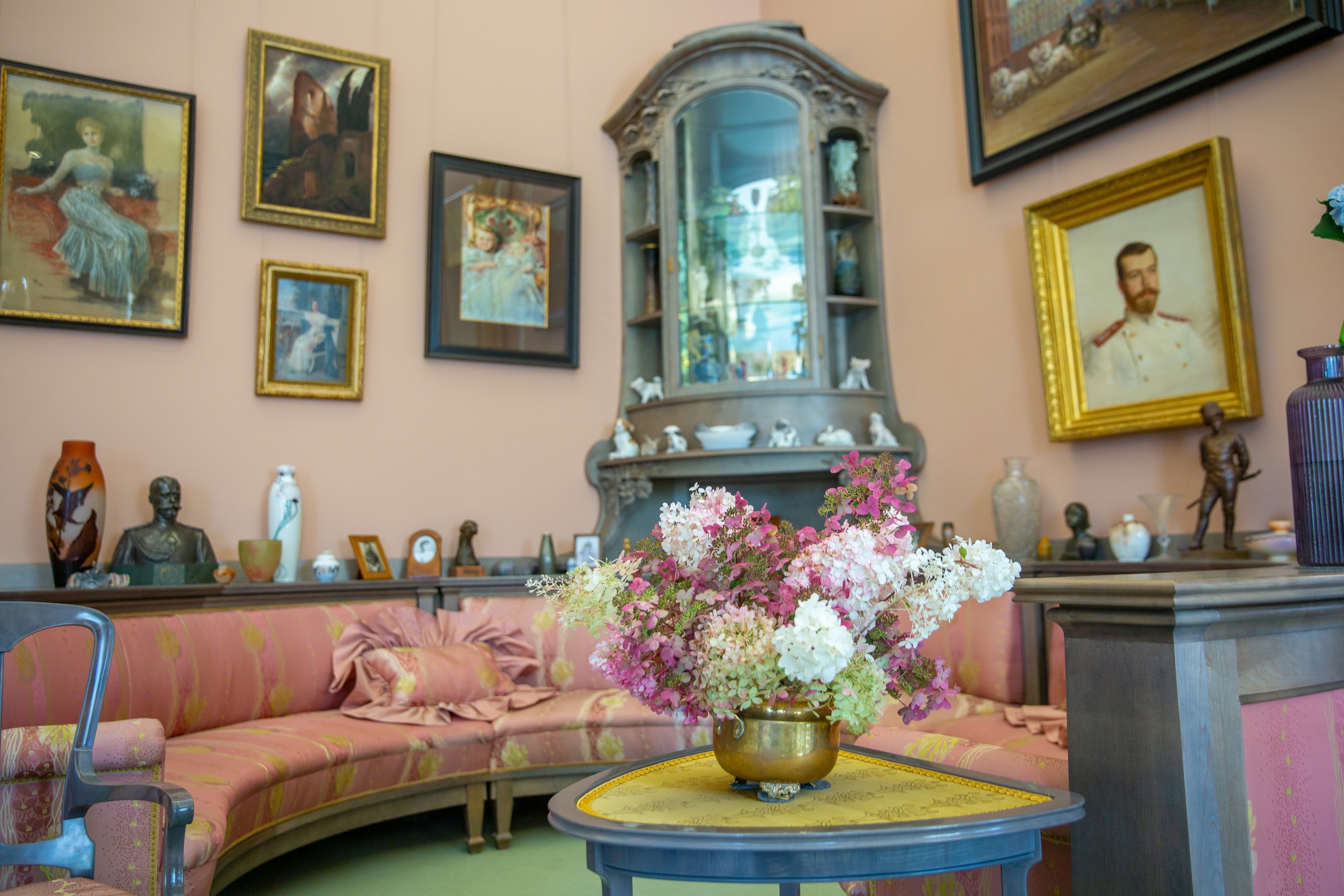 Back
Back
The Alexander Palace

город Пушкин, Дворцовая улица, дом 2, литера А
One of the imperial palaces of Tsarskoye Selo
In the northern part of the picturesque Alexander Park stands a magnificent building with a two-century history – the New Tsarskoye Selo (later – Alexander) Palace. It was comissioned in 1792 by Catherine II for her beloved grandson, Grand Duke Alexander Pavlovich (future Emperor Alexander I) on the occasion of his marriage to Grand Duchess Elizabeth Alexeevna.
The architectural design of the Alexander Palace belongs to the famous Italian architect Giacomo Quarenghi; the construction was carried out under the guidance of architect P.V. Neelov. In May 1796, during the last year of the Empress’ reign, the construction was completed, and on June 12, 1796, Grand Duke Alexander Pavlovich and his wife moved into the new palace.
The palace is an elongated two-story building with double wings on the sides. In the middle of the main northern facade, two rows of Corinthian columns form a magnificent colonnade. From the side of the regular part of the Alexander Park, the facade of the building is designed in the form of a semi-rotunda, covered with a spherical dome.
While Alexander I preferred to stay at the Grand Palace during his visits to Tsarskoye Selo, his successor Nicholas I loved the Alexander Palace very much and paid special attention to its improvement. The Alexander Palace was the grand-ducal residence of Nicholas I’s grandson, Grand Duke Alexander Alexandrovich, the future Emperor Alexander III: his rooms were located in the left wing of the building. However, after becoming emperor, Alexander III preferred the Gatchina Palace out of all summer residences.
Since 1904, the Alexander Palace became the permanent residence of Emperor Nicholas II, who was born here in 1868 and was especially fond of Tsarskoye Selo. The last 13 years of the Russian emperor’s reign passed here; it was from this palace that the imperial family was sent into exile to Tobolsk on the morning of August 1, 1917.
At the beginning of the 20th century, almost all the important events related to Russian governmental life took place in the Alexander Palace: receptions of ambassadors and foreign figures, as well as major celebrations (like the 300th anniversary of the House of Romanov and the 200th anniversary of Tsarskoe Selo) happened here.
In 1918, the Alexander Palace was opened to visitors as a state museum. The display included the historic interiors in the central part of the building and the private apartments of the Romanov family in the east wing of the palace. Later, the left wing was turned into a rest home for NKVD staff, while on the second floor of the right-hand wing the former secluded rooms of Nicholas II’s children became an orphanage named after the “Young Communards”.
During the Nazi German occupation of Pushkin, the palace was used as headquarters for the German military command. The cellars became a prison and the square in front of the palace was turned into a cemetery for SS soldiers.
After the end of the war, the palace housed the Central Repository of Museum Stocks from the Suburban Palace-Museums. Later in 1946, it was handed over to the USSR Academy of Sciences to store the collections of its Institute of Russian Literature and to house a display of the All-Union Pushkin Museum. Hence, in 1947-1951 refurbishments began in the palace, in the course of which it was intended to restore the surviving Quarenghi interiors and extant fragments of decor and also to recreate the interiors from the time of Nicholas I and Nicholas II.
By a government decree, the Alexander Palace was reassigned to the Naval Department in 1951. The palace collection, which was among the evacuated items in the Central Depository of Museum Funds of Suburban Palace-Museums, was transferred to the Pavlovsk Palace Museum.
In 1996, a grant from the World Monuments Fund (WMF) was received for the restoration of the Alexander Palace, and works on repairing the roof of the building began. In October 2009, according to the order of the Federal Property Management Agency, the palace building was transferred on the right of operational management to the Tsarskoe Selo State Museum and Heritage Site. Since that time, large-scale work began on the restoration of the facades and interiors of the Alexander Palace. The work was completed in August 2021, and today the renovated halls of the museum are re-opened for tourists.



